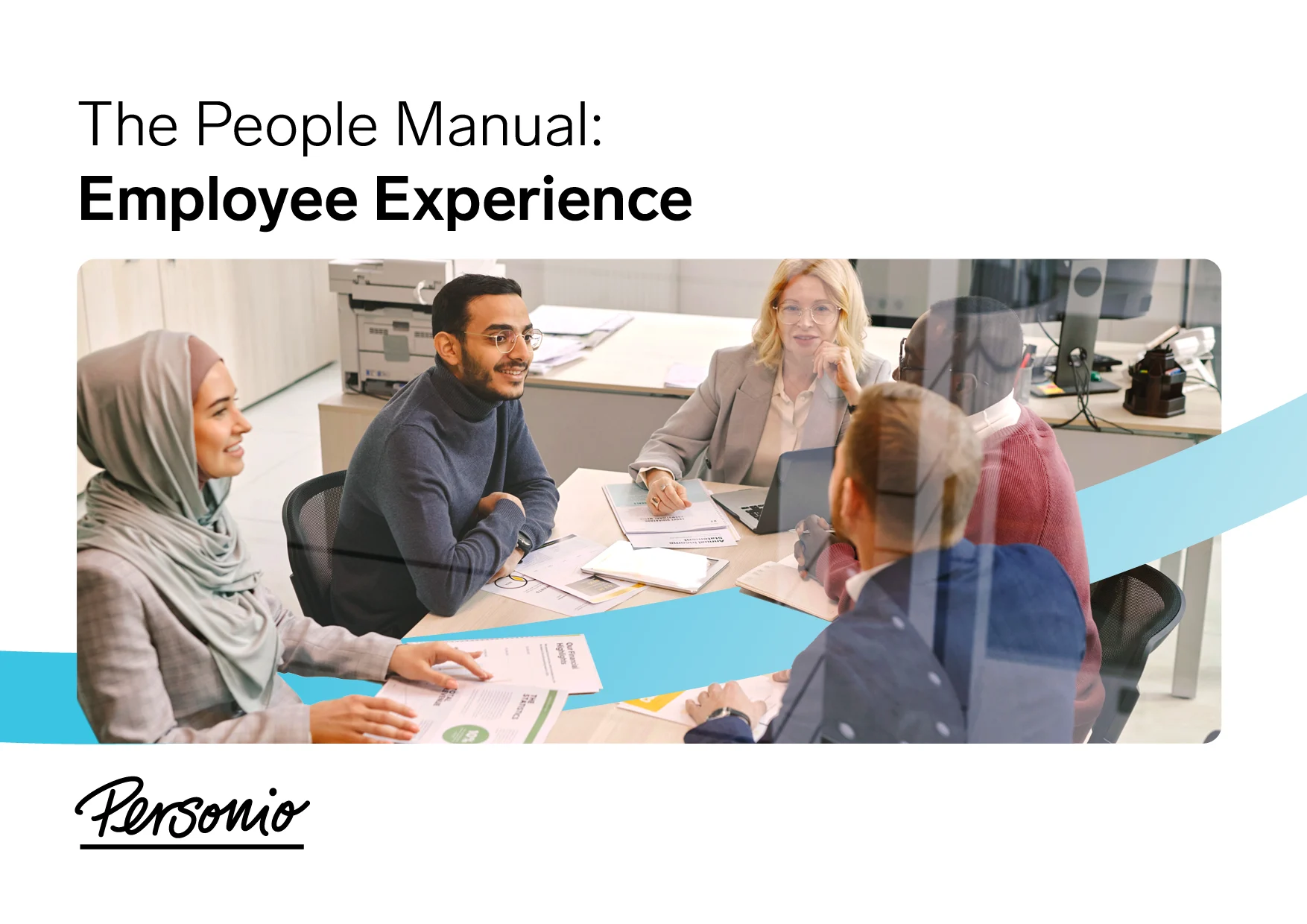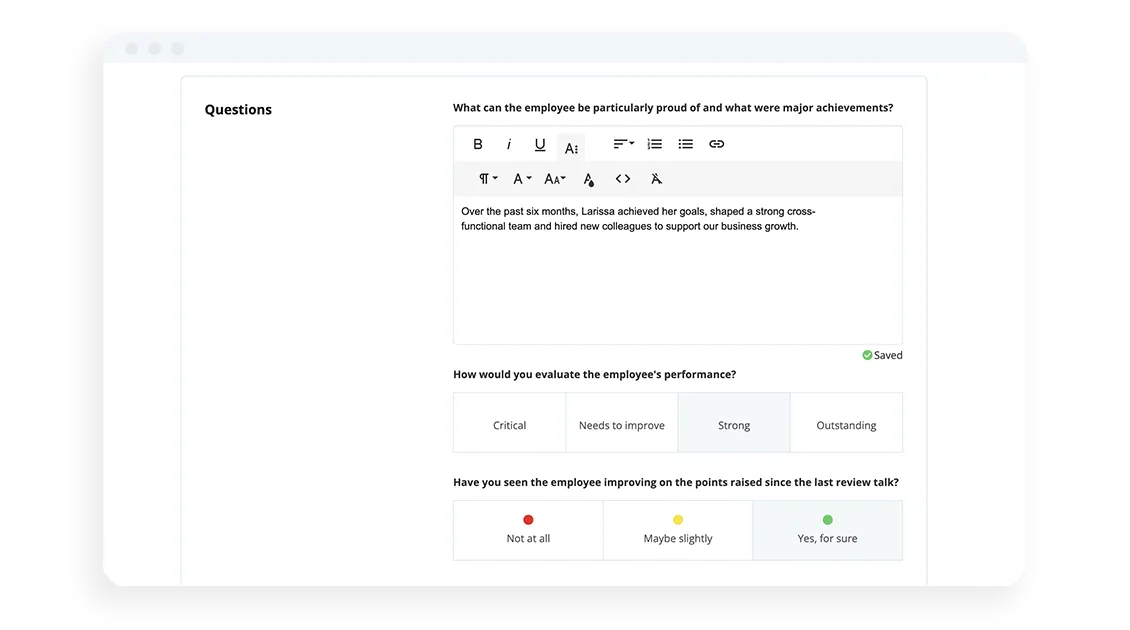Employee Recognition Programs: Boosting Employee Loyalty

Employee recognition programs can help ensure that employees enjoy their work, and always give 100%. And, with only a few measures in mind, you can meaningfully boost employee loyalty. In this article, we'll share some employee recognition ideas to help boost staff loyalty in the workplace. We hope you find them helpful!
Get the guideWhat Are Employee Recognition Programs?
An employee recognition program is a program, strategically designed by an employer, to reward employees for achievements, like new working methods, skills, and other important milestones. They help boost employee motivation through celebrating employee achievement.
How Do You Create Employee Recognition Programs?
If creating an employee recognition program, in order to boost employee loyalty, then you not only need the ideas to motivate employees but the means to build a concrete program. So, how do you do it?
The first thing is to acknowledge the fact that having employee recognition programs, or employee loyalty programs, is a step in the right direction. How they will look will differ across organizations, but having one at all is a step in the right direction.
Here’s an outline, or a framework, to developing employee recognition programs:
Have A Vision – What do you want from your program? Do you want to boost employee loyalty overall, or do you want to pay particular attention to a specific department? You need a clear understanding of why you want, and need, this program in place before you ever begin.
Gather Feedback – You can’t motivate your employees without knowing what motivates them in the first place. Take the temperature of your organization to understand what people value, keep an eye out for any commonalities, and be sure that all of your employees feel heard.
Develop Objectives – In order for recognition to be unbiased and objective, you need to craft a selection of criteria that corresponds to employee recognition. It could be based on performance, development, and could be both role and department-specific. Make sure that whoever you want to feel involved can ‘see themselves’ in the steps to get there.
Involve Leadership – Make sure that managers and leaders in your organization are involved in the process. Employees should feel recognized from every rung of the corporate ladder, so you need to make sure these people are involved with calling people out in order to motivate them.
Make It Work – The most important thing about employee recognition programs is that they will hardly be perfect from the very beginning. Make sure to collect plenty of feedback and iterate as you go, because employees will often be your best sounding board when they officially get ‘recognized.’
What Does Employee Motivation Mean?
Employee motivation is an important part of talent management and staff development and is used to increase employee performance through positive incentives. For employers, it is all about "influencing" the employee’s attitude and actions, so that they bring positivity into work (which is reflected in the result).
Why Is Employee Motivation Important?
Peakon’s Employee Expectations Report 2020 shows that 59% of employees surveyed globally are not motivated (as of January 2020). These are alarming numbers considering that 80 million employees were surveyed for the report.
But, where does demotivation come from? According to this same study, it’s when employee expectations do not match what employers offer. When the expectations versus the reality are misaligned, then employee loyalty begins to slip because employees lose trust in their employers.
What Drives Employees To Succeed?
Employee motivation can come from both extrinsic and intrinsic factors:
Extrinsic motivation – This includes all motivational incentives that come from the outside. If the employee fulfills requirements a, b and c, they receive a reward. Or, in a working context, a promotion.
Intrinsic motivation – This includes all motivational incentives that come from within, i.e. from the employee themself. Reasons for this can be the enjoyment of the work or a sense of responsibility.
In 2011, the non-fiction author Dan Pink developed a model for his book “Drive” that clearly explains this issue. His model is based on psychological research from the self-determination theory of psychologists Deci & Ryan. Based on their research, Dan Pink identifies three conditions under which people have high intrinsic motivation.
He names the three conditions as
Purpose – In order to be motivated to work, employees must know the meaning, purpose, goal, and reason for their working conditions. Only then can they embrace the goals of the organization.
Mastery – Employees are more willing to perform if they are deployed according to their inclinations and competencies.
Autonomy – Employees are motivated when they make independent decisions and assume responsibility.Intrinsic motivation leads to lasting loyalty
Companies can do a lot to motivate employees with targeted measures. Of course, extrinsic stimuli such as salary increases or promotions work to achieve a certain level of motivation. But you can only achieve a long-term retention effect if you motivate employees intrinsically.
If employees see something meaningful in their actions, they will be happy to do their work. Managers play a key role in this because they communicate to employees through praise, feedback, measures, and goals what influence employee performance has on the success of the company.
Consider This: Employee Recognition Ideas
Employers can make a positive difference in their employees’ attitudes with a few targeted actions. We’ve put together a list to help inspire employee recognition programs, across industries:
1. Praise
Who doesn’t want to be praised by their manager or colleagues after a project? To motivate employees, it is important to also tell them that they have performed well. In addition to praise, constructive criticism and feedback counts, too.
2. Open and Clear Communication
When something goes wrong, it is often due to misunderstandings that arise because of unclear communication. Employees then walk away from conversations with different expectations and goals and are demotivated when they realize their work amounts to thin air. Avoid this by making clear statements and summarizing what has been said again in order to come to a common level of knowledge.
3. Responsibility & Trust
Nobody likes micromanagement. Therefore, to maintain employee motivation, you should be able to let go. Give your employees independent projects so they can prove their expertise. This increases their self-esteem.
4. Sense Of Work
Your employees need to understand how their work contributes to the company’s strategy. Include this in your feedback process so that employees and managers are constantly talking about the employee’s role.
5. Leadership
To boost employee morale and efficiency – and earn their respect – leaders should lead by example and demonstrate a motivated attitude themselves. This can be good preparation for a meeting, but also a positive attitude when things aren’t going smoothly.
6. Personal Goals
If you have personal goals, you have something to strive toward. This motivates and encourages employees to perform at their best. So, set partial goals (not necessarily linked to monetary incentives) per month or quarter so that your employees have a clear goal to pursue.
7. Error Culture
How you handle mistakes in your company has a big impact on the motivation and attitude of your employees. Are mistakes allowed and are lessons learned from them or does no one dare to try new things because mistakes are “punished”? A positive error culture promotes the commitment of your employees, even in the case of daring projects.
8. Salary
Although salary is not the biggest motivator for most, fair compensation shows your appreciation for the employee. So reward good work with salary increases as well.
9. Celebrate Successes
Completed projects should also be celebrated together as a team – especially if it was a major and successful milestone. This strengthens team cohesion and motivates them for the next project.
10. Flexible Working Hours
In a global study conducted by Buffer and AngelList, 98% of employees surveyed say they want flexible working, and go strongly for location-independent working such as home office. Employers should meet these expectations to enable a good work-life balance and thus increase employee retention.
11. Encourage Development
If employees can continuously develop their expertise and soft skills and apply them on the job, they will be more motivated to get to work. After all, nothing is more demotivating than monotonous tasks. In addition to regular seminars and coaching, job rotation and job enrichment can be good internal measures.
12. Eating, Drinking, and Exercising
Sometimes even the little things in life make a difference. Offering your employees free drinks and food shows them that you are interested in their general well-being. This can provide an extra boost of motivation and increased employee retention.
Making Employee Recognition Programs Work
Having employee recognition programs in place can have a tangible impact on both employee motivation and overall employee loyalty. This boost your retention rates, lower you attrition rate, and take your company culture to new heights.


